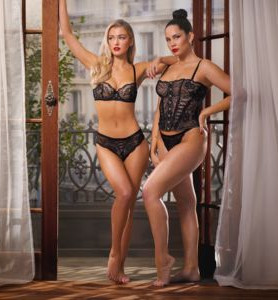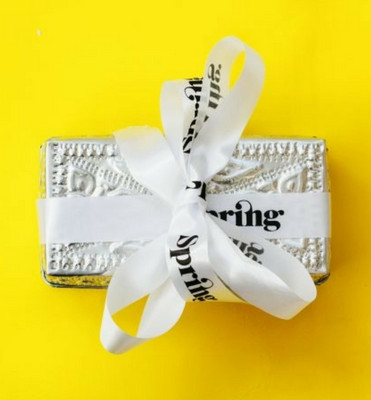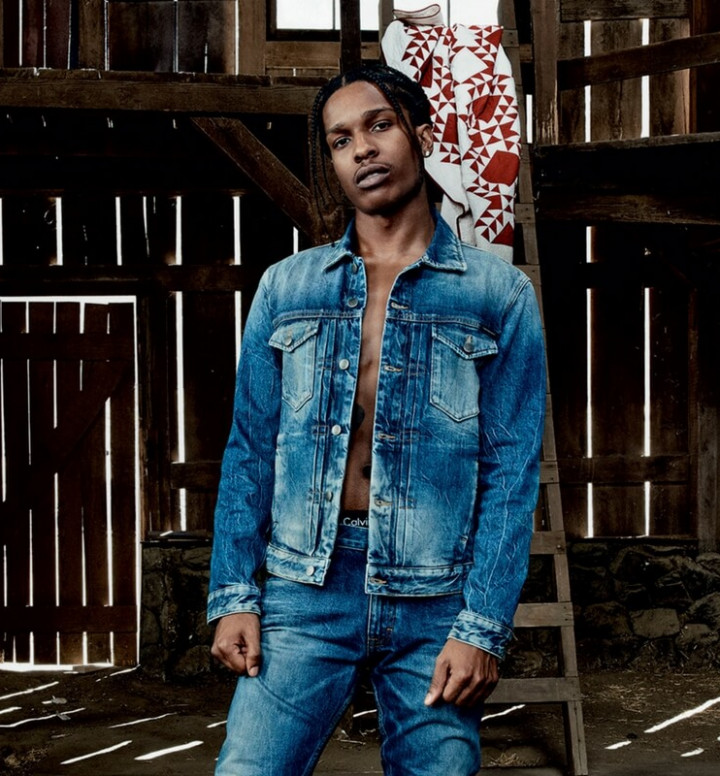Margaret Zhang for our #innovationissue
Australian-born blogger Margaret Zhang’s meteoric rise in the world of fashion hasn’t gone unnoticed, which is why you’ll spot the impeccably dressed 23-year-old perched front row at fashion shows around the world.
Having perfectly used digital media to communicate her style and vision to a global audience, Margaret now consults creatively to brands looking to lead the way through content. She took some time out of her jet-setting schedule to shoot our cover and speak with editor Steven Fernandez about the importance of innovation.

You’re always travelling. Where are you mostly based? Where’s home for you?
I’m between Sydney and New York most of the time and spend a bit of time in Asia, but it just depends where work takes me. I’ve been spending a lot more time in Europe, London and Paris. Fashion capitals mostly but sometimes location shoots can take you really interesting places you never thought you’d go
It seems like you live on a plane, basically.
Yeah, pretty much! I probably spend more time in airport lounges than anywhere else.
When you return to Australia, what’s the thing you enjoy the most about being home?
It’s a weird one but I love how the produce is so fresh! Australian produce is so clean and delicious to eat and you forget how good something like that tastes.
What about New Zealand fashion? Do you have any favourite Kiwi designers?
Of course what Karen Walker has built. She’s built an empire. Deadly Ponies for their awesome leather goods. And Georgia Alice! She’s doing really well and she’s such a sweetheart. It’s hard to come across really genuine people in the fashion industry and she’s such a ray of sunshine as well as being very talented. I also love Stolen Girlfriends Club; I think they’re so cool. I aspire to be as cool as Stolen Girlfriend’s Club.

Tell us briefly how you came about setting up your blog, Shine by Three?
Honestly, I needed web storage space! I’d taken a step away from ballet and learnt to shoot on film and spent a lot of time in a dark room. I’d archived a lot of art photography I really liked or photographers I really admired. Also couture because I was really into fashion in the ballet scene, like John Paul Gaultier, Raf Simons, Viktor & Rolf, that kind of sculptural silhouette vibe. I had way too many images and had filled my dad’s computer – he wanted them off his computer, so I uploaded them onto a blog with a caption of what it was and why I liked it. I think at the time I was posting a new post several times a day just for me to have and then I started noticing people checking in and being interested in what I was wearing. So yeah, it was very organic in that sense. I think I was 16 at the time and it’s just grown very organically from there.
So you just mentioned ballet, can you give me a bit of a rundown on your upbringing and childhood? What were some of your early direct creative influences?
Actually my parents are not in creative industries at all, but my parents are both inherently creative. My mum is really good at drawing, my brother and I went to art classes when we were younger because mum never got to and she thought it could be good for us. My brother and I both played piano from when we were three or four, we both played violin from very young, and we both did ballet from very young. My parents were just trying to give us all of these opportunities they never had, to let us discover for ourselves what exactly it was that we liked.
You’re exposed firsthand to lots of different brands and individuals through your work. Can you comment on the impact of social media and how it influences the way brands and individuals reach their audience?
It’s obviously such a great time for new brands in particular because the world is their stage. Anybody anywhere could accidentally stumble across your work, or if they have their formula right, anybody could see what they do. It’s just an interesting time because the market is so saturated though too – because of that access more and more people are jumping on the train, starting more websites and starting more brands. It’s a good time now though because people are starting to realise that numbers aren’t everything, it’s not about having a million followers, it’s really about the quality of your work, about speaking directly to your consumer and having a real opinion. If you’re a fashion brand for instance, knowing your customer really well and engaging them on a very intelligent level is important, so they can relate to your product in a context outside of the product itself.

As an example, what’s a brand you admire in terms of their content and the way they use social media in a way to gain their following?
I’ve never even owned one but I’ve always thought that GoPro does so well at showing people how their product can be used. Obviously GoPro is not really in my space, like I’m not in action sports at all, but as much as I’m not their target audience, it’s really incredible how they’re able to cultivate excitement and engagement about how their product can be used. It’s about the lifestyle around that product, rather than talking about boring camera specs.
With Instagram specifically, do you encourage having a strong visual identity and sticking to it? Or do you encourage people to evolve and change?
I don’t think it’s about the visual identity ever, I mean, obviously your tastes will change over time and that’s a natural progression. I think as long as you’re true to yourself and what you think is beautiful, it’ll be authentic. It’s the authenticity and trueness to your voice that’s really important.
You create and curate the content for your own Instagram, and in many ways that’s similar to the pages in a magazine. Can you tell me about the processes you go through in creating content for your feed?
My blog and all of my social media is actually quite organic. I post when I post and it’s all relatively accurate to my life, or in the case of my blog it’s a couple of weeks after because I do want to write something that’s substantial and that’s hard to do on the road. But I don’t sit down at the beginning of the year and write out a big editorial plan or anything like that. I do have subjects I know I want to cover at some point on the website and things do become relevant or I get ideas for posts from experience. For example, the other week I did an interview on a shoot and the journalist asked me where I would wear the outfit I was wearing. From that experience I wrote a blog post about how buying clothes shouldn’t just be for occasions or people to see, it’s about you feeling good and dressing how you think is awesome, you know? It’s more things that come up in daily life that I get inspiration from.
And on the subject of shooting and self-shooting, i actually remember planning this issue, i spoke to a few friends that know you and they told me you could probably shoot it yourself!
Yeah I mean I’ve pretty much always shot myself. I used to try to work with photographers but every photographer has their own vision and you can’t really impose on that. When you know exactly how you want to shoot and you’re a photographer you just see the circumstances in a different way – like my idea through someone else’s eyes wasn’t the same, so that was quite difficult for me. Also when I started my website I was in high school, I didn’t have any exposure to photographers, so I had to shoot it myself because nobody else knew I was doing it, it was my own thing.

And when you’re travelling as much as you are, it couldn’t be easy trying to find a photographer?
Totally and it gives me so much flexibility that I can travel on my own and create content. I don’t need to wait for the next passerby to take a picture of me.
What sort of work do you offer brands as a creative director and what can you help them achieve? What sort of services can you offer, so to speak?
A range of things. I do creative consultancy on a campaign basis or maybe an overall branding perspective. I do a bit of rebranding for brands that don’t think their branding is doing their product justice. I do a lot of digital strategy, because that’s my space, but it’s really difficult to get it right for a lot of brands. It’s not just about having a website or just about having an Instagram – there’s a very specific strategy for particular audiences. On top of that just marketing strategy overall, but it’s always case-by-case.
And with that you’re constantly travelling, it takes you all around the world.
Yeah and that’s the beauty of the internet. It’s really amazing that our world is so global now and I can travel, I’m very lucky.
What are your tricks for staying fresh when travelling?
Well, this is a super weird one and I don’t know if this is for everyone. I wear a facemask, like a surgical mask – those white ones. I wear one of those on the plane because it reduces exposure to all the diseases that can be in the air-conditioning on the plane and I’m on a plane so much. It looks super weird and it freaks people out at night! I also always try to time my meals to the destination of where I’m going the day before I travel so that my body doesn’t get too much of a shock when I arrive. I drink a huge amount of water on the plane – you can never have enough water. What I’ve found is you just have to eat more cleanly, so like, ordering the vegan meal ahead of time to ensure there’s lower amounts of sodium, lower amounts of sugar, less artificial flavouring, less oil. It’s not going to be the most exciting meal you’ve had but I can’t afford to have sugar and salt when I’m travelling. I also take an olive leaf extract and Echinacea vitamin every day, it’s really effective in keeping your immune system up.

Going back to your work as a creative consultant but also as a photographer and stylist, it puts you in a really good space to comment on the changing fashion landscape in Australia and abroad. What do you think is going on at the moment?
In Australia it has taken a while for people to catch up to the commercial viability at a global stage, but now it’s a really exciting time for Australian and New Zealand designers, because the internet has provided a platform to show the huge amount of creative talent and the unique creativity that we’ve developed in the southern hemisphere. In America you do notice that things start to look the same but Australia and New Zealand have definitely worked in isolation, which I think is great. I think for a while the barrier was the production capacity and slowly I think we’ve become a bit stronger with that.
This is our innovation issue of remix and ‘tech’ has been such a big buzzword in fashion recently, even if you just look at the recent met gala. What can you say about technology and fashion and how they complement each other?
I think for a long time it has been a buzzword with no meaning but I think now more than ever people are just looking for new ways to engage with products on a day to day basis. I think there are ways to incorporate the use of technology as a service to fashion or incorporating technology into garments and through that I think fashion can become more functional over time. I know someone that’s working on swimwear that changes colour depending on how long you’ve been in the sun, to avoid sun over-exposure. There are a lot of things like that in the mix, like Apple watches etc. Also I think innovation in sustainable fabrics is really important but kind of undervalued – using recycled fabrics is really underrated, but I think it’s really important for people to be able to do that.
Another big buzzword that’s been thrown around a lot in the creation of this issue was the world ‘millennial’ and what it means to be a part of this generation. What do you think the millennial generation will be remembered for?
I think we’ll be remembered for constantly being on technology, I suppose. I honestly think the millennial generation approach life in a very different way and people don’t adhere to the structure that society has set for them, which is awesome. They don’t subscribe to societal norms. I’m actually writing a piece on it right now; it’s not about achieving things that our parents and our seniors tell us is the qualifier of success, we define our own success. Whether that’s running your own online business or owning your own brand, I don’t think it’s a concrete thing for anybody. I think the older generation needs to wake up and realise that. I don’t think people can look at millenials and say they’re so annoying or they’re so self-absorbed, it’s not about what they’re interested in, it’s their attitude and I think it’s a really great attitude.

And for your story, where would you like to take this next? Where do want your work to take you in the foreseeable future?
Obviously I’ll continue to travel and spend a lot more time overseas. I’m working a lot more and I’m trying to learn more about my heritage – speaking Chinese. I’d love to do more consulting and work on small publications. I like to keep an open mind about what’s next.
When can we expect you over in New Zealand? You mentioned being a big fan of top of the lake...
I would love to come to New Zealand sometime soon! I’ve been dying to shoot in Queenstown for the longest time. It’s just a matter of when I can find a month, because I don’t want to rush it. I’m in countries for three days and then I’m out and it’s totally not the way to explore a country. I adore Top of the Lake, I think it’s one of the most beautiful films; I would love to come over soon!

Photography: Derek Henderson
Styling: Mark Vassalo
Hair: Alan White using R+Co
Makeup: Peter Beard
Interview & words by Steven Fernandez





